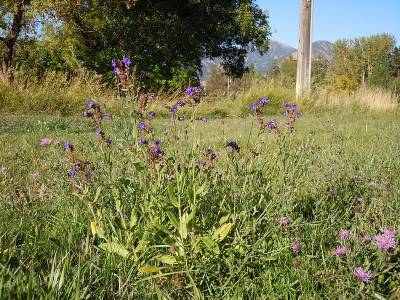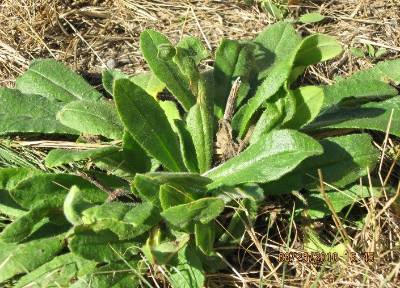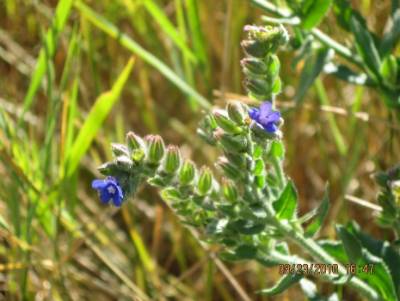Common bugloss (Anchusa officinalis)- June 2019
Download weed post on Common bugloss (Anchusa officinalis) as PDF (includes word puzzle)

Matt Lavin, Flickr.
Introduction
Common bugloss is a perennial in the Boraginaceae family, the same plant family as houndstongue (Cynoglossum offinale) and blueweed (Echium vulgare). It is native to Europe and western Asia. Common bugloss is a noxious weed in Oregon, Washington, and British Columbia; in Montana Lincoln and Ravalli counties include common bugloss on their county noxious weed lists. The first record of common bugloss in Montana was in Gallatin County in 1994. Since then it has been reported in Flathead, Lake, Missoula, Ravalli, and Stillwater counties with the highest number of occurrences in Ravalli County (information obtained through Montana Natural Heritage Program).
Identification and biology
Common bugloss forms a rosette of oblong leaves that are broadest toward the tip and taper to the base (i.e. oblanceolate). Plants may remain as a rosette the first year and

Common bugloss rosette, Jane Mangold, MSU.
then begin flowering the second and subsequent years. Leaves along the lower stem are attached via a stalk (i.e. petiole), but upper leaves do not have a stalk (they are “sessile”) and can have slightly toothed edges. One plant can have several flowering stems. Flowers range from pinkish red to deep blue and have a white center. Like houndstongue and blueweed, the flowers are arranged in a helicoid cyme, uncurling as flowering progresses. Each flower produces four nutlets with each nutlet containing one seed. Common bugloss has a taproot. All parts of the plant are covered with stiff hairs.
Habitat and spread
Common bugloss prefers disturbed areas, for example along roads and trails, but it can invade pastures and rangeland. It reproduces through seed.

Jane Mangold, MSU.
Management options
Common bugloss is not common in Montana, and therefore prevention is the top management priority. Learn to identify common bugloss so if present, it can be detected early. Because common bugloss is tap-rooted, plants are easily killed by hand pulling or digging/severing the root below the root crown with a shovel or spade. Mowing at the time of flowering (but before seed production) may keep plants from producing seed, but mowing will not kill plants. Herbicides containing the active ingredient 2,4-D, chlorsulfuron, or metsulfuron are effective on common bugloss and should be applied when common bugloss is in the rosette to early-flowering growth stage. Regardless of the control method, controlling common bugloss prior to seed production is important because it reproduces through seed.
